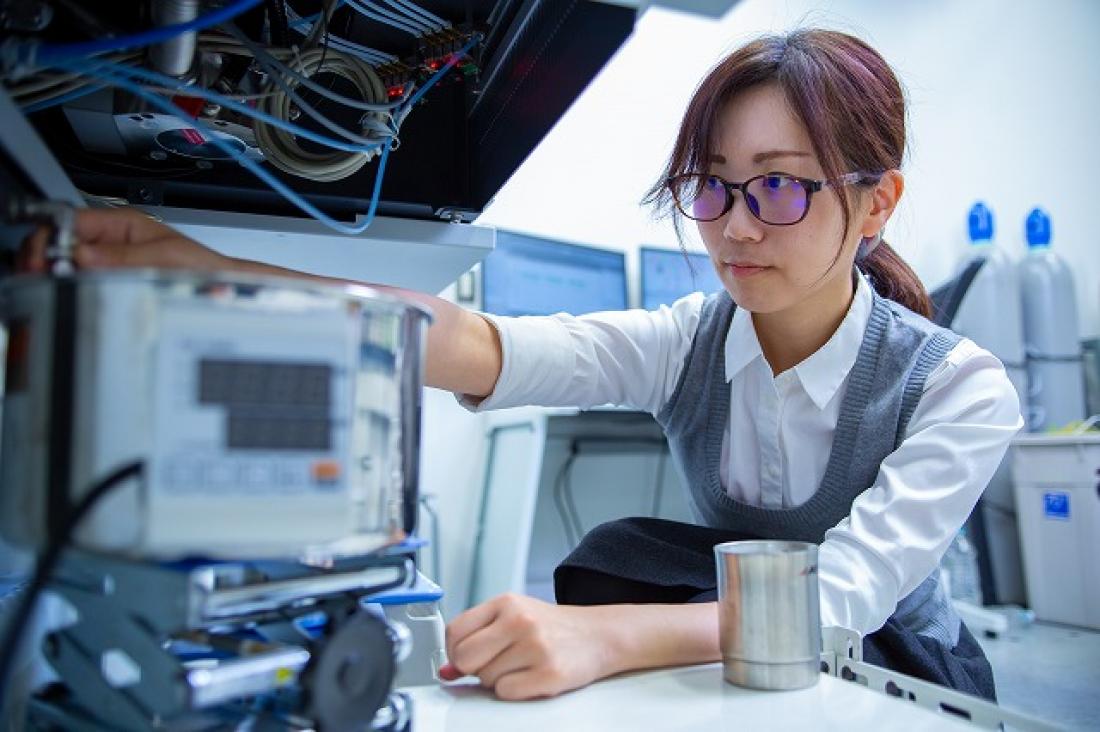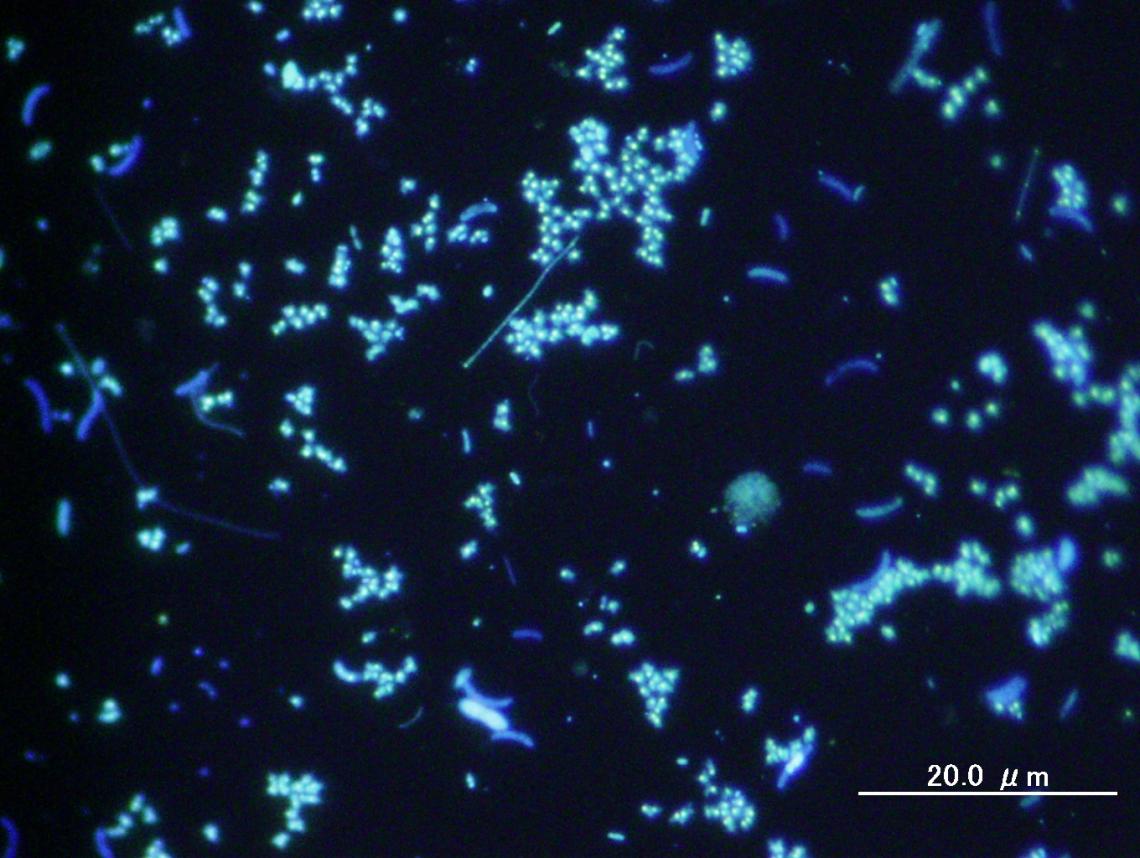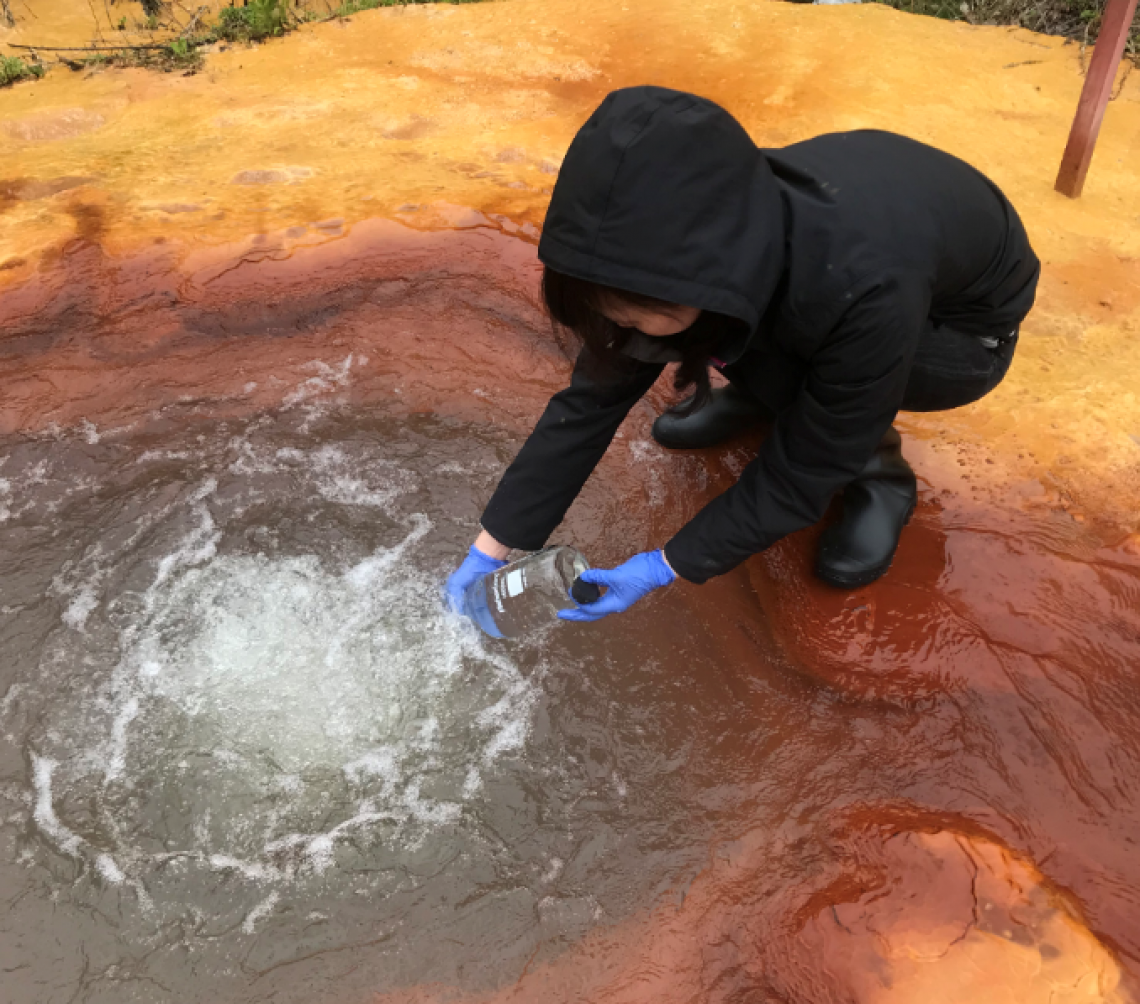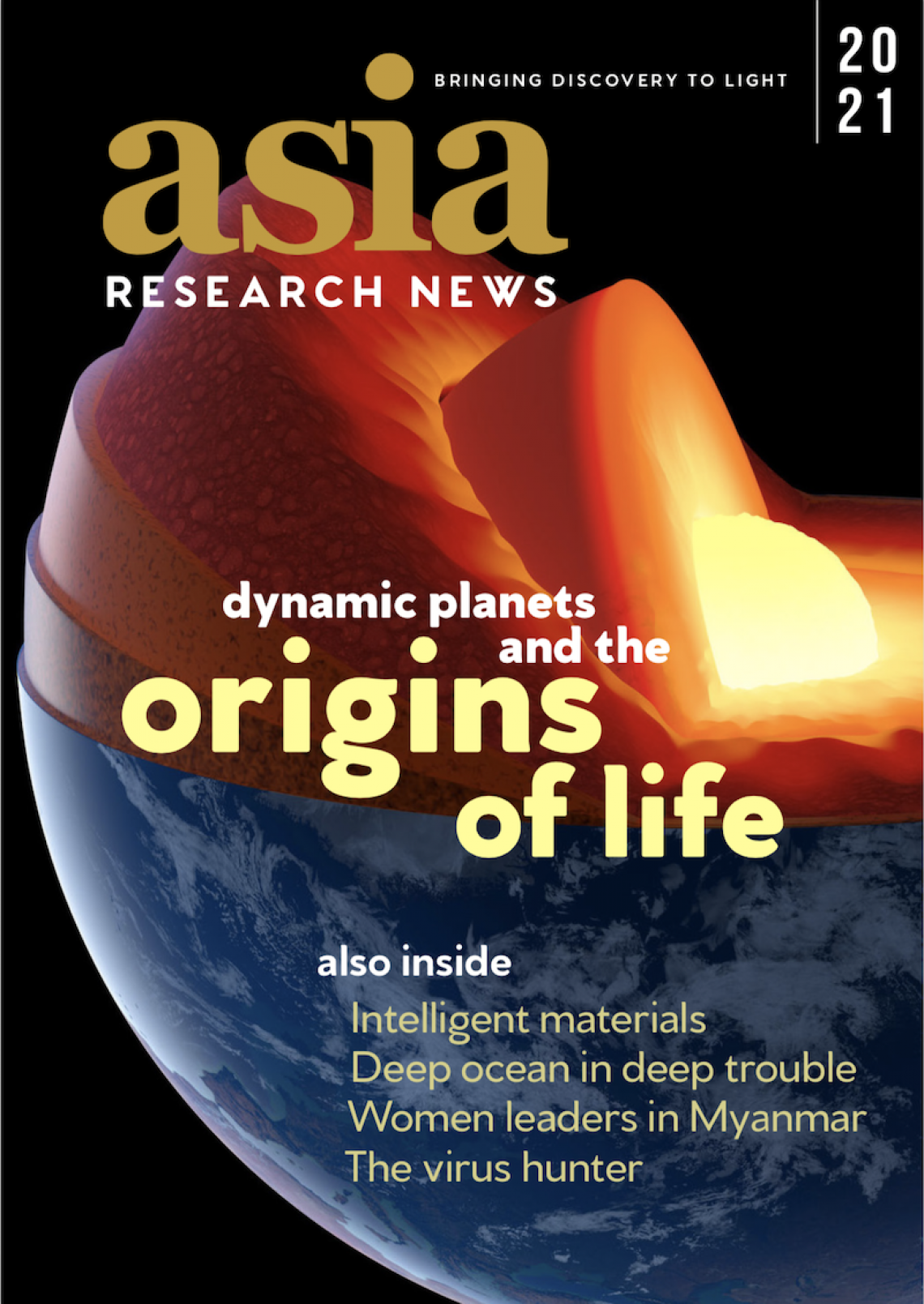Nakagawa operating a high-resolution stable isotope mass analyser. As a lab manager, she maintains laboratory equipment, provides analytical counselling and assistance while using the equipment for her own research.
This story is featured in the Asia Research News 2021 magazine and as a podcast. Read this story in Japanese here or in ISSUU (above) or listen to the podcast (above).
この記事は日本語で読むことができます。ウェブ版・マガジン版を読む。ポッドキャストを聴くには上記をクリック。
Q: What kind of research do you specialise in?
“The environment and the ecosystem of microorganisms” are the keywords. My research aims to understand how microorganisms exist harmoniously with the surrounding environment, processing compounds in an ongoing cycle. I collect samples during fieldwork in the natural environment such as at lakes and hotsprings and analyse microbial compositions, and how they compete and cohabit with each other by using “stable isotope” ratios and genetic information.
A stable isotope is a non-radioactive form of an atom containing protons and neutrons. The number of protons defines the element and the sum of protons and neutrons gives the atomic mass. In some elements, there are isotopes that have a different number of neutrons and a different weight that exist in a stable ratio. However, organisms tend to absorb light elements, making the isotope ratio inside organisms slightly lighter than the isotope ratio in the surrounding environment they inhabit.
Organisms take in elements from the environment and build their bodies through their metabolism. When organisms die, easily degradable organic matter breaks down, including DNA, making it difficult to extract genetic information from sedimentary rocks. However, chemical information such as stable isotope ratios of organic matter, which is not easily decomposed, remains for billions of years. If we can understand the metabolism of the remaining organic matter, we can clarify more about the environmental conditions and organisms that lived at that time.
Nakagawa uses a fluorescent reagent to make microorganisms visible under the microscope. “Although microorganisms are transparent to the naked eye, they appear like the stars in the night sky in a micrograph. This is a shot where I was moved by the existence of microorganisms,” Nakagawa says.
For example, when the organic matter from a 3.4-billion-year-old rock was found and examined, the organic carbon isotope ratio was close to the ratio produced by organisms. This led to a conclusion that there was a living organism at that time.
Particularly, I am hoping to show visually and numerically what functions, materials and energy the ecosystem needed during a shift from the anaerobic environment in the early Earth period to the current aerobic environment, and how it developed a system to cycle materials stably and effectively during those times.
Q: Why did you choose to study microorganisms?
I always liked living organisms and nature. I was very curious about what system they live in. You cannot see microorganisms with the naked eye, but they work and influence many different places. Their work is very interesting and I wanted to understand it better. That is why I became a researcher.
Q: Could you share your recent findings and current project?
In an international joint project, we conducted geological, chemical, biological analyses on fluids, gasses, and sediments near volcano areas and hot springs in Costa Rica. I analysed the carbon isotope ratio of the hot spring water, which aimed to better understand carbon circulation from the deep Earth to the surface. When we put together all the data with collaborators, we found that the amount of carbon dioxide supplied to the Earth’s surface was larger than previously thought. Of all carbon dioxide produced from the deep Earth, 90% remained as carbonate underground and a remaining few percent was converted into organic matter by microorganisms in hot springs.
The surface and deep carbon cycle of the Earth is important for analysing how the climate shifts over time. This project improved the carbon dioxide flux model and also presented a model of interdisciplinary research that looked at biological and non-biological activities.
My research group is also developing a new method for analysing stable isotope ratios. It will allow us to obtain new information and with that we will be able to open discussions on molecular formation and annihilation processes, which currently remain unknown. This will help understand environmental conditions that sustain life on Earth and detect biological activities in other planets. Not only that, but it is also expected to help a wide range of fields, such as identifying origins of agricultural products and developing new health and disease diagnosis systems.
Q: How important is the role of a lab manager in research?
It is necessary to have a lab manager so that researchers can focus on their projects. But the word “lab manager” is not yet common in Japan. In Japanese universities, labs are managed by faculty, who also have to nurture students in studying and research. This can overload them, leaving a little time for doing their own research. It is common to hire a technician or post-doc for doing the work similar to that of a lab manger, but when operating an international, complex research institute like ELSI, I feel it is effective to have lab managers who are equipped with the same level of expertise as researchers to operate the labs.
Q: As a lab manager, what sort of experience did you gain?
Since a lab manager has to manage and maintain the lab and equipment, there are many opportunities to interact with various junior researchers and students inside and outside ELSI who come to use the labs. I am consulted by people from different disciplines and this helps me notice a new way of using the equipment or how you can utilise it more effectively. It gives me an opportunity to think further and many joint projects began like that.
On the other hand, I found it difficult to make sure new users respect the rules for using the institute and labs. Not only are they from different fields, but also from different labs and countries – and they do not share the same common knowledge or lab rules. If the rules are overbearing, it will be a burden for both users and managers to keep up. We settled on conducting an orientation and regular meetings with users to communicate the general rules that should be followed.
Q: What equipment do you manage in your lab?
I manage the equipment used for chemical analysis of gas and liquid samples. For example, there is the latest version of a high-resolution stable isotope mass analyser. In Japan, ELSI is the only institute that owns it. This machine measures isotope molecules with such small existence rates that they cannot be analysed with any other machines.
Q: When do you feel most rewarded?
I like analysing in general, so I feel most rewarded when I manage to obtain the data I need, when I make progress in research with students, when I can advise what equipment to use and how to proceed with lab work, and when I can support in producing a good result.
Everyone has something they want to achieve. But the road to achievement can feel long and tough, and there are times when I feel down by comparing myself with others or cannot see the way to solution. But the important thing is that you keep doing what you want to do, if you are in a place that allows you to do so. At first, progress is slow, but once you reach a certain stage, it accelerates. Through interacting with other researchers and supervising students, I continue to grow.
As a lab manager, I cross paths with researchers and students from various disciplines and nationalities. This gives me an opportunity to revisit my existing knowledge from other points of view, providing a new prospect. I am in a position to give support, but I am also supported by them in pursuing my research.
In an interdisciplinary workplace or international joint research, I found many challenges in handling samples and technologies that I have no experience in. But I have learnt that by working together with others, I can keep going forward, one step at a time.
Further information:
Mayuko Nakagawa
[email protected]
Earth-Life Science Institute (ELSI) - Tokyo Institute of Technology
World Premier International Research Center Initiative (WPI)






